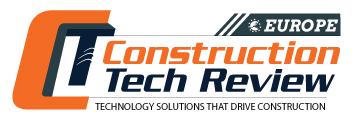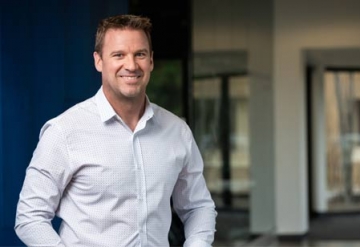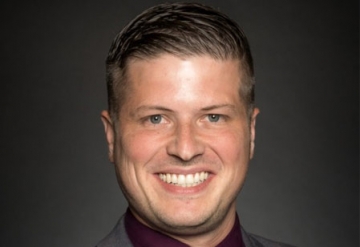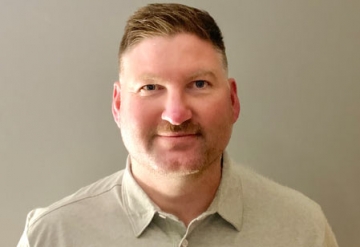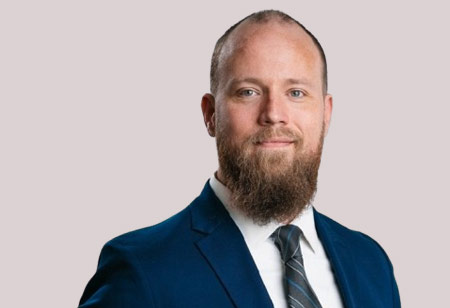THANK YOU FOR SUBSCRIBING

Operational Leadership VS Field Leadership in the Utility Construction Business
Jarvis Lopez, Regional Safety Manager Power Division, Henkels & McCoy

 Jarvis Lopez, Regional Safety Manager Power Division, Henkels & McCoy
Jarvis Lopez, Regional Safety Manager Power Division, Henkels & McCoyAs a Regional Safety Manager for Henkels & McCoy on the Power Division side, it’s always a challenge to balance both operational leadership and field leadership skills when you step into these roles. While distinct, these two forms of leadership are interdependent. The overall success of an organization depends on a seamless relationship between them, where:
• Operational leadership defines the efficient systems and processes that the organization uses. This includes tasks such as setting up an efficient supply chain and creating quality assurance protocols.
• Field leadership then applies these processes in practice, making real-time adjustments and problem-solving to ensure successful execution in their specific environment. Field Leadership is essential for adopting the correct approach to working with diverse backgrounds and personalities within the Utility Construction sector.
This interconnected approach ensures that a company's overall vision (the "what") is not only strategically sound but is also executed effectively on a day-to-day basis (the "how").
Operational leadership, or what I prefer to call it (Corporate Leadership), in the world of Utility Construction brings a more hands-on approach to improving business workflows for greater efficiency. It also allows me to have visibility into metrics and reports, enabling me to make informed decisions within an office setting. Building professional relationships with Executives at high levels to ensure the buy-in for Safety starts with them.
It's always a challenge and a common one for us safety leaders in large organizations, especially in high-risk industries like utility construction. The ability to navigate and influence both executive leadership and field crews is critical to establishing a strong safety culture and driving continuous improvement.
"Operational leadership, or what I prefer to call it (Corporate Leadership), in the world of Utility Construction brings a more hands-on approach to improving business workflows for greater efficiency. It also allows me to have visibility into metrics and reports, enabling me to make informed decisions within an office setting."
Here are a few of my strategies I've learned to maneuver around to effectively manage the balance between operational and field leadership in your role as a Regional Safety Manager:
1. Build relationships across all organizational levels
Your observation that safety buy-in must start at the executive level is spot on. Building strong professional relationships at every level is the core of your strategy.
• Executive level: Translate safety performance into the language of business. Connect safety outcomes to operational performance, financial metrics (e.g., cost of incidents), and reputation. Frame safety not as a cost but as a strategic investment.
• Front-line leaders (foremen and supervisors): Win their trust by demonstrating you are a resource, not a police officer. Listen to their challenges, provide them with practical, hands-on support, and give them the tools to succeed. Recognize them as key safety advocates and empower them to lead by example.
• Field crews: Be visible on job sites and spend time talking to crews about their day-to-day work, not just about safety rules. Use these opportunities to learn their perspective, address their concerns, and demonstrate that you care about their well-being. This builds trust and encourages buy-in for safety initiatives.
2. Translate strategy into action
The role of a Safety leader is to bridge the gap between high-level operational strategy and on-the-ground execution.
• From the boardroom to the field: After securing executive buy-in for safety initiatives, work directly with front-line leaders to show them exactly how to implement the changes and explain the benefits. Use visuals, such as videos or demonstrations, to make complex safety procedures easy to understand.
• From the field to the boardroom: Use your field insights to provide valuable feedback to leadership. Report back on how new policies are working in practice and identify any potential areas for improvement. This demonstrates the value of your field leadership and helps refine operational strategy.
3. Leverage data for informed decision-making
Using metrics and reports is crucial for making a compelling case for safety investment.
• Data collection: Beyond lagging indicators like incident rates, focus on leading indicators such as near misses, safety observations, and proactive inspections. Track and analyze this data to identify trends and predict areas of risk before an incident occurs.
• Data Communication: Present your findings in a way that suits the audience. For executives, use high-level dashboards that show return on investment and business impact. For field teams, use simple charts that highlight on-site safety performance, enabling them to track their progress and identify areas for improvement.
4. Provide adequate training and resources
Ensure that safety training is practical, relevant, and engaging for field personnel, and teach your field Safety Professionals the right approach in both field and classroom settings.
Role-based training: Tailor training materials to specific roles and the unique hazards faced by power division crews. Incorporate hands-on demonstrations and real-world examples.
Accessible resources: Create a repository of easily accessible safety resources, such as brief safety videos or mobile-friendly checklists that can be accessed directly from a job site.
5. Be both a coach and an inspector
Your field presence should combine a coaching mindset with a safety inspection role.
Coach: Frame site visits as opportunities to coach crews on best practices and provide immediate, constructive feedback. Focus on celebrating safe behaviors as much as correcting unsafe ones.
Inspector: Conduct thorough and consistent safety audits to ensure compliance and identify areas for improvement. Always clearly communicate the purpose of your audit and be transparent about your findings.
By successfully blending your operational and field leadership skills, you can become a highly effective safety advocate who is respected and trusted by both the C-suite and the field crews.
"Safety starts with you"
Read Also
Development of the Logistics Warehousing Market in Brazil
Driving Innovation and Preserving Tradition
People-First Innovation: Developing Virtual Design and Construction (VDC) Training Programs to Empower Field Team Members
Sustainable Projects: Aligning Business and Purpose in Latin America
Engage Smarter: Why Constraints Matter More Than Hazards
Obligation or Option?

 Copyright © 2025 All Rights Reserved | by:
Copyright © 2025 All Rights Reserved | by: Construction Tech Review
| Subscribe | About us | Sitemap| Editorial Policy| Feedback Policy